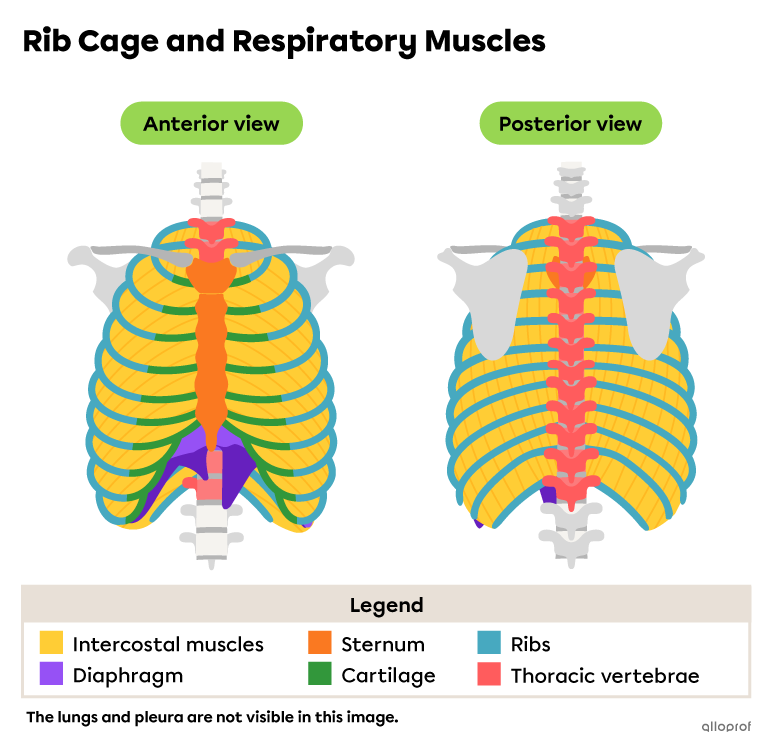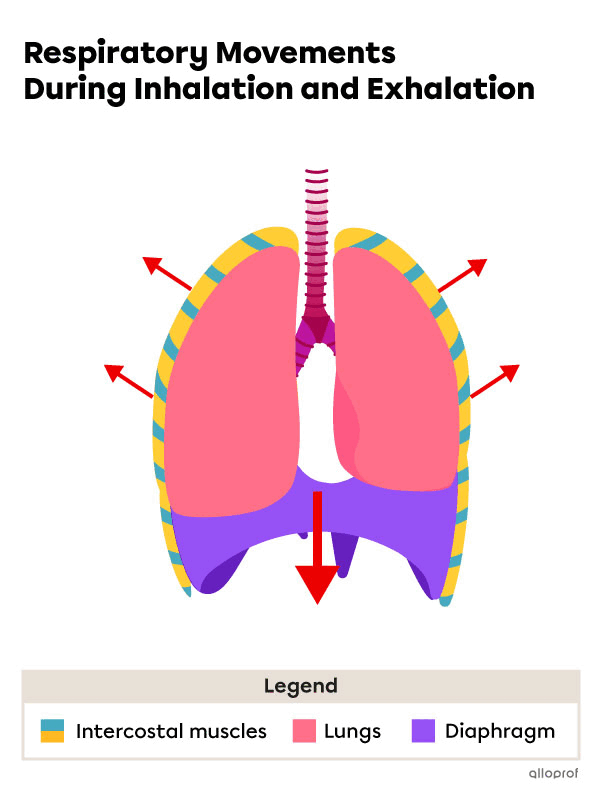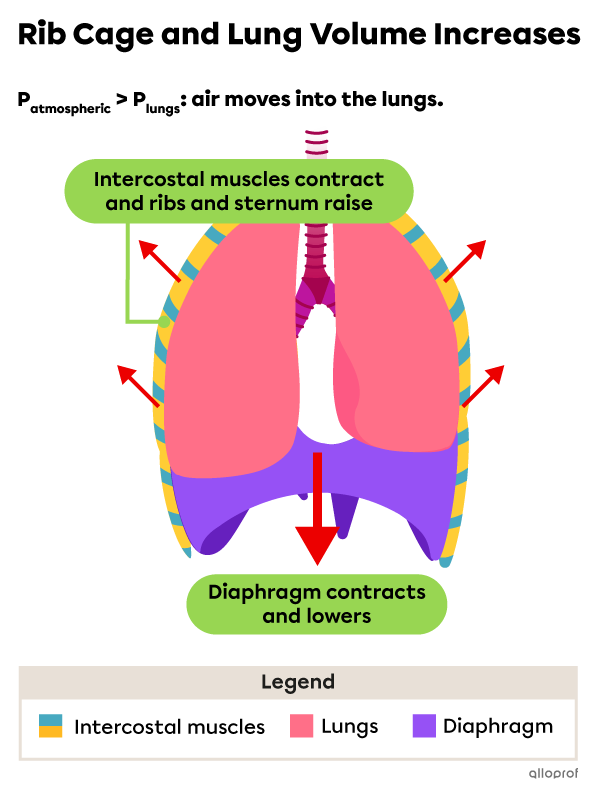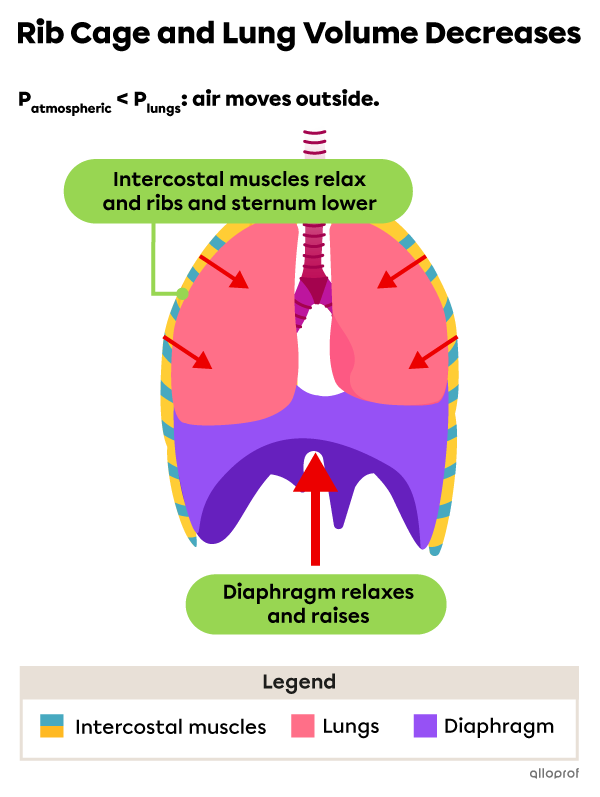-
Respiration is a biological function facilitated by inhalation and exhalation. Its purpose is to move oxygen-rich air |(\text{O}_2)| into the body and carbon dioxide-rich air |(\text{CO}_2)| out of the body.
-
An inhalation is the respiratory movement that brings the ambient air into the lungs.
-
An exhalation is the respiratory movement that carries air out of the lungs to the outside.
-
When INhaling, the air is brought INside of the body.
-
When EXhaling, the air is EXpelled from the body.
Respiratory movements involve several structures and muscles as identified in the following image.

The rib cage consists of the sternum, the ribs and the thoracic vertebrae, forming a semi-rigid cavity that contains the lungs. The intercostal muscles and the diaphragm control the volume of the rib cage. The cartilage that connects the ribs to the sternum is flexible. This, among other things, allows the rib cage to change its shape during breathing.
The bones of the rib cage, the intercostal muscles, the diaphragm, the lungs and the pleura are described in the following table.
| Structure | Description |
|---|---|
| Diaphragm | Skeletal muscle that lowers during an inhalation and raises during an exhalation |
| Intercostal muscles | Skeletal muscles located between the ribs |
| Ribs | Flat bones extending forward from the thoracic vertebrae |
| Cartilage | Flexible connective tissue that joins the upper ribs and the sternum |
| Sternum | Flat bone to which seven pairs of ribs are attached |
| Thoracic vertebrae | Twelve vertebrae connected to ribs |
| Lungs | Two organs of the respiratory system that ensure gas exchanges between the air and bloodstream |
| Pleura | A double membrane that covers the lungs, holding them in place in the chest cavity and protecting them from the friction during respiratory movements |
Together, these structures alter the volume of the rib cage and the pressure in the lungs, allowing air to move when inhaling and exhaling.
The respiratory movements of inhaling and exhaling allow air to move through the respiratory system.
Since air is a fluid, its pressure changes in inverse proportion to its volume.
-
As the volume increases, the air pressure decreases.
-
As the volume decreases, the air pressure increases.
The air pressure in the lungs varies as the volume in the rib cage changes. These changes in pressure cause the air to move, and this is called inhalation and exhalation.
Air always moves from a higher-pressure area to a lower-pressure area.
Inhalation occurs when the volume of the rib cage increases, which decreases the pressure in the lungs, and the air enters into the lungs.
Exhalation occurs when the volume of the rib cage decreases, which increases the pressure in the lungs and the air exits from the lungs.

The respiratory movements during inhalation and exhalation occur as follows.
-
The diaphragm contracts which lowers it.
-
The intercostal muscles contract, which causes the ribs and sternum to raise.
-
The volume of the lungs and the rib cage increases.
-
The air pressure in the lungs decreases and becomes lower than outside of the body.
-
Air moves from the outside (higher-pressure area) into the lungs (lower-pressure area). This movement of air allows the pressure to equalize: the pressure inside the lungs becomes equal to the pressure of the ambient air, and marks the end of an inhalation.

-
The diaphragm relaxes which raises it.
-
The intercostal muscles relax, causing the ribs and sternum to lower.
-
The volume of the lungs and the rib cage decreases.
-
The air pressure in the lungs increases and becomes higher than outside of the body.
-
Air moves from the lungs (higher-pressure area) to outside (lower-pressure area). This movement of air allows the pressure to equalize: the pressure inside the lungs becomes equal to the pressure of the ambient air, which marks the end of an exhalation.
